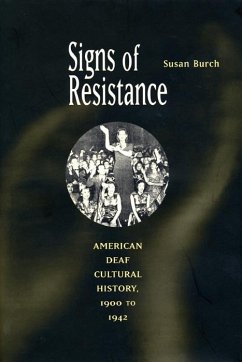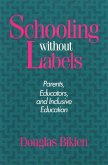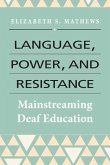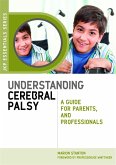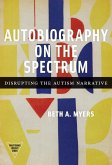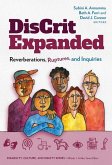During the nineteenth century, American schools for Deaf education regarded sign language as the "natural language" of Deaf people, using it as the principal mode of instruction and communication. These schools inadvertently became the seedbeds of an emerging Deaf community and culture. But beginning in the 1880s, a developing oralist movement sought to suppress sign language, removing Deaf teachers and requiring Deaf people to learn speech and lip reading. Historians have assumed that in the early decades of the twentieth century oralism triumphed over-whelmingly. In Signs of Resistance, Susan Burch proves them wrong; not only did Deaf students continue to use sign language in schools, hearing teachers relied on it as well. Drawing from such resources as Deaf newspapers, memoirs, films, and oral (sign language) interviews, Burch shows how the Deaf community mobilized to defend sign language and Deaf teachers, in the process facilitating the formation of collective Deaf consciousness, identity, and political organization.
Hinweis: Dieser Artikel kann nur an eine deutsche Lieferadresse ausgeliefert werden.
Hinweis: Dieser Artikel kann nur an eine deutsche Lieferadresse ausgeliefert werden.

